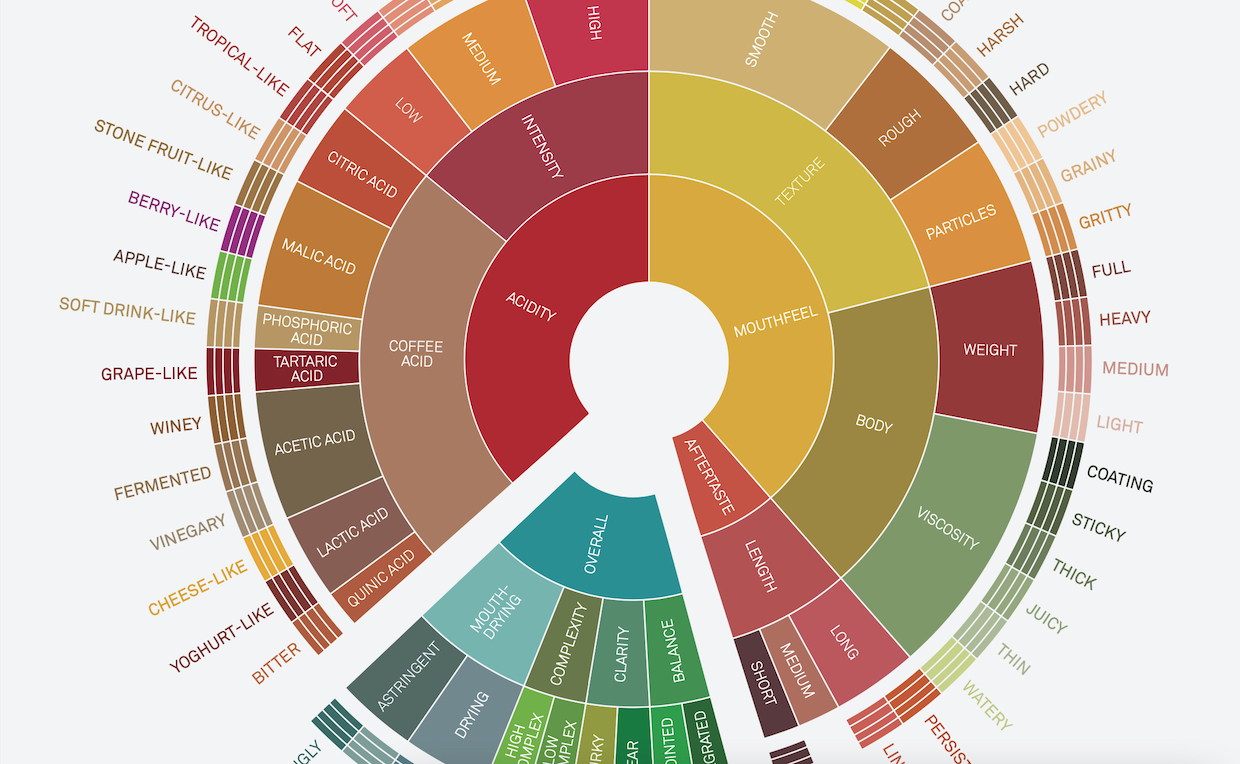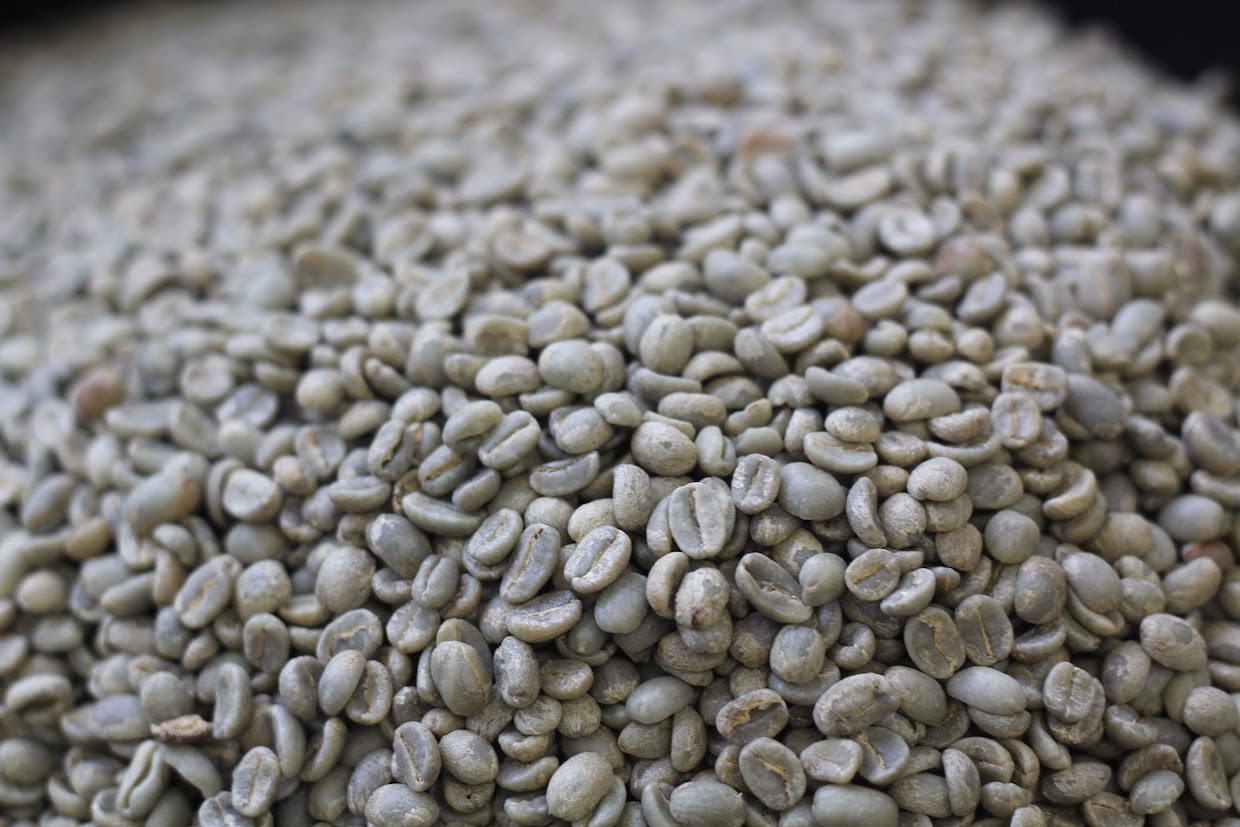
A cross section of the Coffee Character wheel. The full version can be found through the AgriFutures website.
New research funded by an Australian government agricultural agency has produced the “Coffee Character Wheel,” a cupping tool designed to more thoroughly describe or identify coffee with the concept of terroir.
Conceptually similar to the Specialty Coffee Association‘s well-known Coffee Taster’s Flavor Wheel — which is used as both a sensory analysis tool and as a decorative poster in roasteries and cupping rooms all over the world — the Coffee Character Wheel provides terminology for the coffee qualities of acidity, mouthfeel and aftertaste, as opposed to flavor.
Published in the Journal of Sensory Studies, the research paper explores the creation of the Coffee Character Wheel. The process involved an extensive literature review that identified 695 unique sensory terms related to acidity, mouthfeel and aftertaste, then pared that down to a final list of 95 terms.
The academic output is part of a larger months-long project funded by Australian agricultural development funding agency AgriFutures. That project is designed to “define the terroir of Australian coffee to increase demand and investment” in Australian-grown coffees.
“Terroir, a word often associated with wine, can be thought of as the ‘taste of place’ of a product being consumed. Although a product’s terroir is specific to a location, the exact definition can vary for different crops,” two of the study’s authors, from Australia’s Southern Cross University, recently wrote in The Conversation. “Looking at the literature on coffee, we found the definition of coffee terroir would need to be clarified. We compared it to the well-defined wine terroir, and found post-harvest processing should also be included, as it is specific to the location.”
Although the academic study never once uses the term terroir outside of a funding disclosure at the bottom, both AgriFutures and the study’s authors have described the Coffee Character Wheel expressly as a tool to more closely associate coffee characteristics with terroir.
The combined materials also rely on the underlying premise that coffee post-harvest processing is indeed an aspect of terroir, a concept that to this point has been more strictly defined as environmental conditions in which plants grow, such as soil characteristics, climate and elevation.
According to the study’s authors, there are approximately 50 coffee producers spread across two primary coffee-growing areas in Australia, and Australia-grown coffee represents less than 1% of domestic roasting and consumption.
However, when leading cuppings of 150 coffee samples, the research produced results that the study’s benefactors are sure to find promising.
“Our results found Australian-grown coffee is sweeter, nuttier and fruitier in flavor than others,” two of the study authors wrote in The Conversation. “This pleasant terroir is probably due to the cooler temperatures and longer ripening periods in our coffee-producing areas.”
Does your coffee business have news to share? Let DCN’s editors know here.
Nick Brown
Nick Brown is the editor of Daily Coffee News by Roast Magazine.







Comment